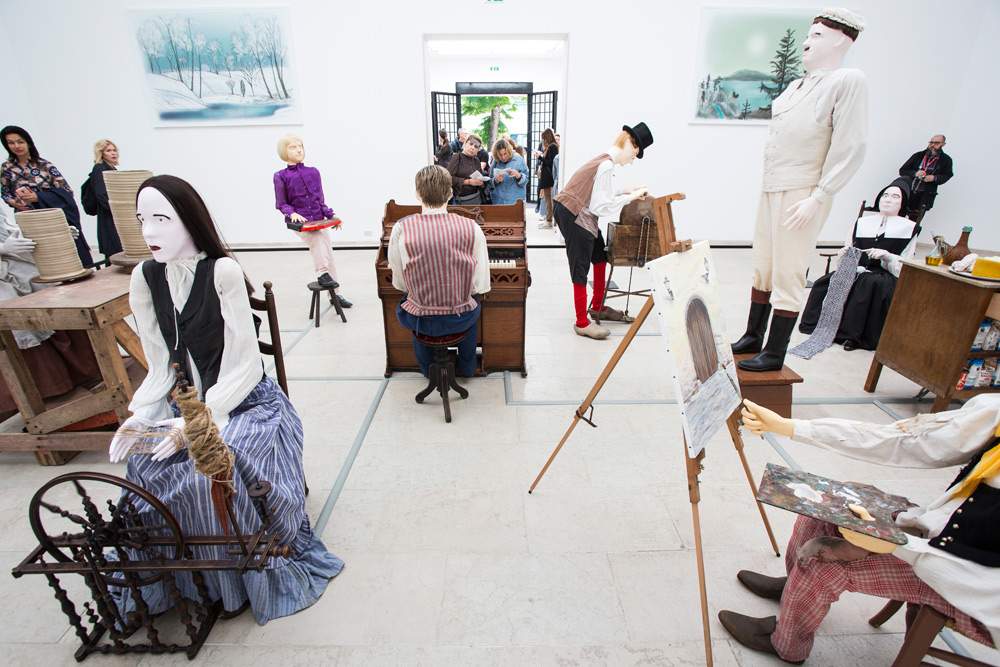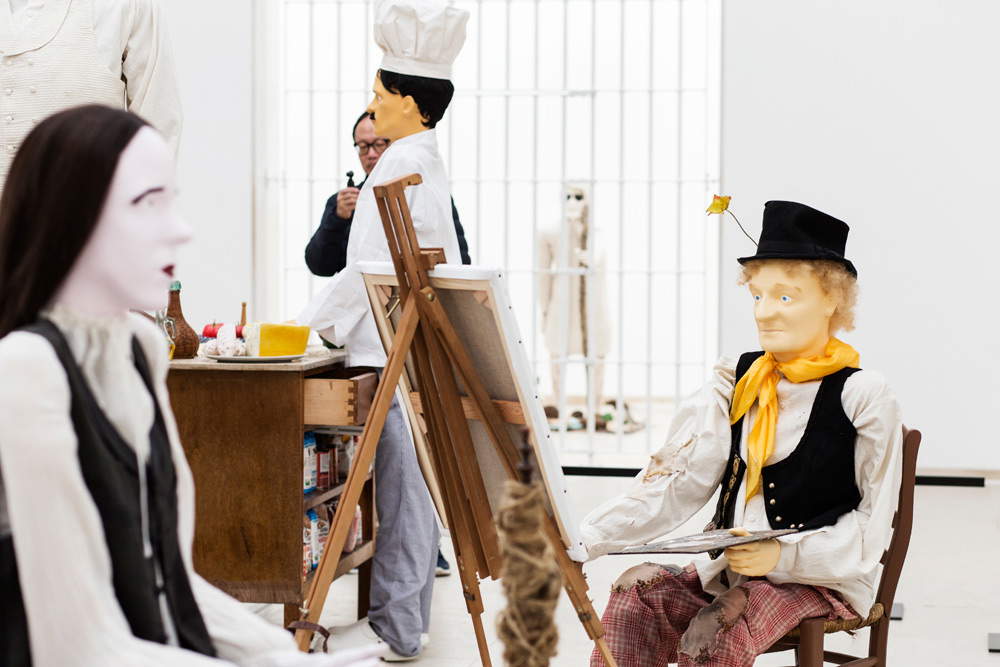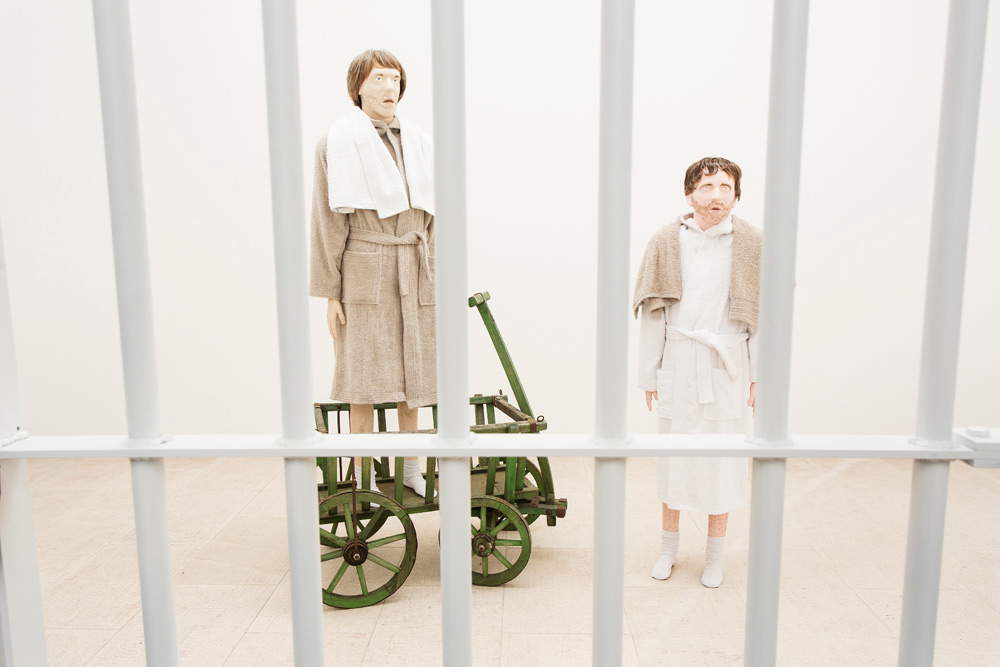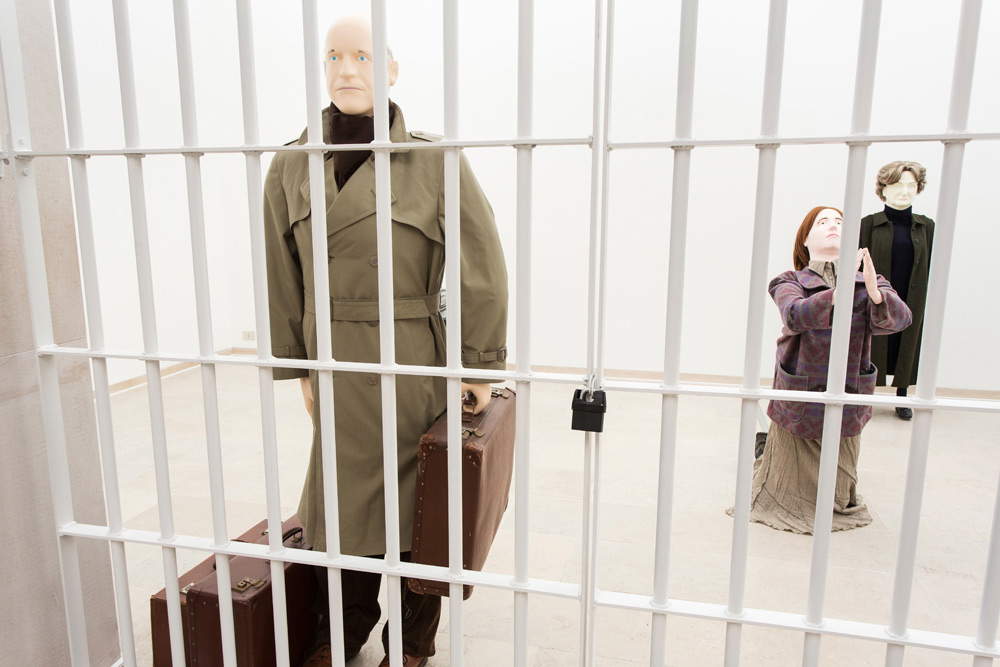by Redazione , published on 15/05/2019
Categories: News
/ Disclaimer
"Dog World" is the title of the Belgium Pavilion exhibition at the 2019 Venice Biennale: a horror wonderland.
Entitled Mondo Cane (Dog World ) is the exhibition that the Belgium Pavilion is offering at this fifty-eighth edition of the Venice Biennale. It is a project by artists Jos de Gruyter and Harald Thys and is curated by Anne-Claire Schmitz: the exhibition, a note says, “presents itself as a local folk museum that stages the human figure. The inhabitants of the pavilion are silent, pale and afraid. They are aestheticized shells, embedded in a cycle of formal activities that the visitor perceives as unusual and divorced from contemporary reality.” The exhibition consists of about twenty life-size figures, almost all automated, accompanied by a series of large drawings of pastoral scenes and steel bars blocking access to the pavilion’s side niches. In the center of the building are artisans, for example, a shoemaker, a stonemason, a spinner, a knife grinder, and others, conscientiously performing their respective trades. The side spaces of the pavilion are a parallel world populated by thugs, zombies, poets, psychotics, madmen and outcasts. These two worlds coexist in the same space, but seem completely unaware of each other. And even the characters exercising the professions hide dark plots (to be discovered with a special guide handed out at the entrance): a kind of horror wonderland emerges, symbolic of human squalor.
Sounds and movements alternate and are triggered by the presence of visitors through a motion detector at the entrance, while the space is imbued with the sounds of songs, plaintive cries and labor. The dolls’ heads are modeled both on fictional characters, who have already appeared in the work of Jos de Gruyter and Harald Thys, and on real people. Following unantica a tradition, the viewer is lured by the promise of seeing wonders at an exhibition: the Belgian pavilion intends to offer the public a real walk-through, akin to a tourist or anthropological experience, reminiscent of unantica Europa.
“Mondo cane” is an Italian expression that took on a very particular connotation after the release in 1962 of an eponymous film of extraordinary popularity: the film, a kind of horror-documentary that provided accounts of a range of cultural practices from around the world (including sacrifices, bloody processions, assorted ceremonies), gave rise to a genre (the mondo movies) whose defining characteristic is a pseudo-documentary approach that focuses on sensational effect and privileges it at the expense of content. Jos de Gruyter and Harald Thys have a habit of distilling fiction from a sometimes all-too-real reality, and both readily admit to“ feeling drawn to the psychotic state of contemporary societies, a state they fear and at the same time convey through their creations.” Mondo cane thus aims to be a continuation of this practice.
The exhibition is further articulated through a publication and a website: the publication Mondo Cane consists of a collection of articles illustrating a variety of facts and events in the world around us. Each article contains a descriptive text (appearing randomly in Dutch, English, French, German and Italian) and one or more illustrations. The tone adopted for the articles and drawings is informative, unspectacular and monotonous. The website mondocane.net is an additional, artistic space in which the ideas of the exhibition can unfold and be explored, and allows visitors to randomly browse through hundreds of videos selected by the artists.
 |
| Belgium Pavilion |
 |
| Belgium Pavilion |
 |
| Belgium Pavilion |
 |
| Belgium Pavilion |
 |
| Belgium Pavilion |
 |
| "Dog World," the horror wonderland of the Belgium Pavilion at the Venice Biennale |
Warning: the translation into English of the original Italian article was created using automatic tools.
We undertake to review all articles, but we do not guarantee the total absence of inaccuracies in the translation due to the program. You can
find the original by clicking on the ITA button. If you find any mistake,please contact us.

































